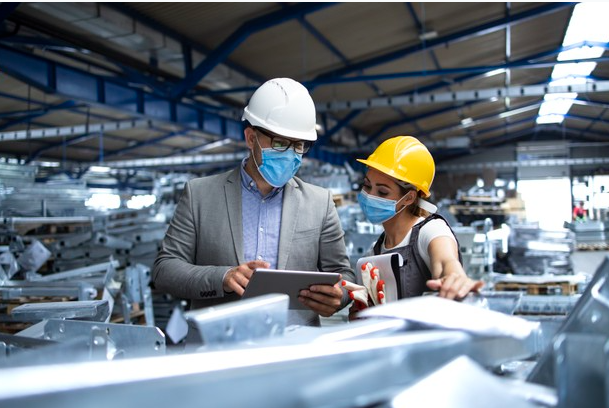Occupational safety and health are the starting points for economic growth. Investing in technology on behalf of their development is the best way to deliver revenue with this year’s scenario.
How does safety impact business?
If we thought that occupational safety had nothing to do with business and economic return, the last Covid- 19 pandemic has proven us wrong. As a matter of fact, safety, health and business were never as related as these last years. Despite living in a technological world with non stopping developments, we weren’t able to control the impact of hundreds of days off work and plant stoppages. Especially at industrial fields.
According to the G20 document about economic impact, industrial production fell on average around 28% only between February and April 2020. Despite a rebound in activity, industrial production remained below its pre-crisis level by June. With new strains frequently appearing, we are still facing complex and uncertain years.
But late year´s numbers have shown how leveraging technological advances can be, by anticipating and preventing work accidents. In 2018, according to OSHA (Occupational Safety and Health Administration), there were 4,779 worker fatalities in the private industry in the United States. Moreover, investing in technology to enhance safety should be a top priority for industrial companies.
Furthermore, from a purely economic point of view, it is relevant to notice that workplace accidents come along with dozens of unexpected problems: fines, worker’s compensation, dealing with lawyers, increase in insurance costs, loss of production and/or equipment, crisis and media management, among others. This costs not only money, but valuable time. For instance, in 2018, according to Injury Facts (organization depending on the National Safety Council), the total cost of work-related injuries rose up to $170.8 billion, and the total time-loss of 70,000,000 days.
Investing in safety: What can technology offer us?
The implementation of technology can directly minimize the risk of accidents and work fatalities, with the use of digital PPEs and diverse devices that can protect employees. These developments allow to easily localize industrial workers in case of an accident, even outdoors or in confined spaces. Some of these have immediate notifications in case of falls or strong blows, and can vibrate or sound in case of dangerous events.
Also, by investing in IIoT and AI, we can collect and provide a huge amount of data that is used in multiple ways, for safety and non-safety purposes: setting up better protocols and processes according to your own operation; improving logistics and supply chain; detecting dangerous behaviors and allowing you to fix them before they produce more damage.
It is then fair to say that decisions made for safety concerns create benefits that go far from their original goals, impacting economic growth as well. Technology not only protects your employees, but it can also help to reduce production times and boost operation.
Safety is the starting point of economic growth
Humans tend to act in a reactive way. And 2020 was the moment when we realized health and safety were the starting points for economic growth. The Covid 19 pandemic showed us that it was something we couldn’t controlled. But, we can decide how we are going to face it’s consequences. One way of turning this macroeconomic scenario around is providing really safe environments for our teams. Investing in tools and technological developments, in order to continue operating and delivering revenue.
Safety must not become one of many priorities; it should be one of the most important values and assets of every industry. Not only is it the right thing to do, but it will also take your business to the next level, with higher standards that can bring long term economic profit. Taking the decision of investing in industrial technology is the real game changer for these times.

